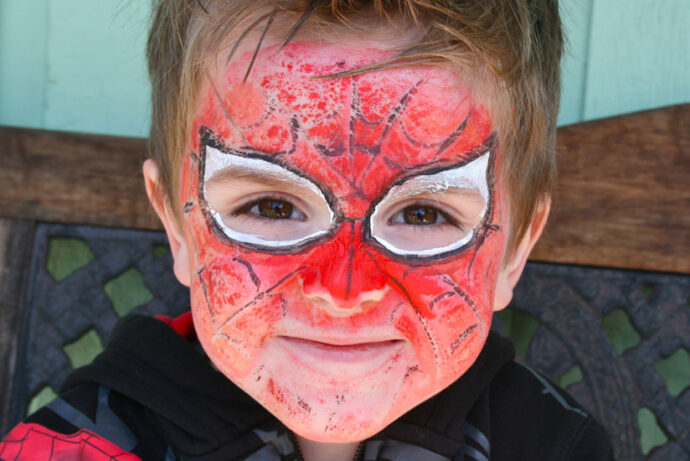New York Times science columnist George Johnson had the epistemological grumps last week, about what he titled “The Widening World of Hand-Picked Truths.” It once seemed inevitable that science would replace our faith-based understanding of the world, he argues, but “that dream seems to be coming apart.” The culprit? It’s not organized religions— though they’re trying their best— it’s our postmodern acceptance of “alternate” and “personal” truths.
Humanity can’t converge upon an objective version of reality because activist groups demand that we accommodate their views about vaccines, fluoride, and GMOs.

NeuroTribes: The Legacy of Autism and the Future of Neurodiversity
Steve Silberman
Avery/Penguin Random House
(August, 2015)
What’s worse, argues Johnson, is that “biologically determined” characteristics like race and gender are now being treated as hazy social constructs—Facebook offers 56 custom gender options, for example. Gone are the days when you’d “identify yourself as male or female according to the way the cells of your embryo unfolded in the womb.”
Even medical pathologies are up for reassessment, Johnson says, “While some parents cling to discredited research blaming vaccines for giving children autism, others embrace the condition as one more way of being and speak of a new civil rights movement promoting “neurodiversity.””
It’s easy to call Johnson out on gender, since it’s currently understood— as empirical fact— that gender and sex are not the same thing. Collapsing gender and sex isn’t objective, it’s a category mistake.
So here Johnson seems to be constructing his own “personal truth” that doesn’t fit with the data.
But what about autism? Could labeling autism a “disorder” be a category mistake, too, another imposition of rigid cultural norms using the language of objectivity? In Neurotribes: The Legacy of Autism and the Future of Neurodiversity, Steve Silberman makes that case, arguing that autism isn’t a modern disease that needs to be cured, but a naturally occurring segment within the range of human cognition.
Silberman’s landmark book narrates a history of autism’s “lost tribe,” which includes such scientific luminaries as Henry Cavendish and Nikola Tesla. Silberman also documents a second tribe, whose shared cognitive habits inadvertently turned them into autism’s historical antagonists.
That group? Scientific thinkers who, like George Johnson, believe they’re being objective when they’re simply demonstrating narrowness of vision.
Autism’s Lost Tribe
Silberman’s own research into autism began in 2000, with an investigation into what seemed to be a surge of autism in tech-centric areas like Silicon Valley. We have long associated engineering and other brainy tech jobs with Asperger’s syndrome, a diagnostic category now considered to be at one end of the autism “spectrum.”
Autism is associated with a constellation of symptoms that include ritualistic behaviors, difficulties with social interaction, and restricted focus; it doesn’t take a huge leap to map those behaviors onto the stereotypical engineer or programmer. Perhaps, Silberman posited the following year in Wired magazine, this uptick in autism is the result of “assortative mating” between high-functioning men and women who, without knowing it, both carry a touch of autism.
The “assortative mating” hypothesis alone isn’t sufficient for explaining the rise in our documentation of autism, but it made waves in 2001 because it broke from popular representations of autism as a narrow, rare, and uniquely modern dysfunction. Today, most researchers agree that autism is not a monolithic disorder with any single biological or environmental cause. It is an umbrella category that covers a range of behaviors, neurological patterns, and developmental trajectories. It is also old. While autism can’t be linked to any single gene, Silberman demonstrates, most cases are rooted in very old genes that are shared across the human population, but which happen to be more concentrated in some families rather than others.
Thanks to increased awareness and better diagnostic criteria, people on the autism spectrum are coming into view. Silberman’s book is a history of this “lost tribe,” a scattered group historically labeled as “childhood schizophrenics,” “feeble minded,” or, in rare cases, scientific geniuses.
If born today, Henry Cavendish would almost certainly be considered “on the spectrum,” for example. The eighteenth-century English chemist discovered hydrogen and composed the theory of electricity that would inform the construction of the first lightning rod. He was also known for extreme behaviors and limitations. He wore the same clothes, ate the same meals, and took walks at the same time every day. He avoided eye contact and social outings, ordering his household staff to communicate with him only through notes left on a hall table.
Many of his contemporaries attributed these limitations to his simultaneous ability to focus on experiments with such intensity. Silberman describes other scientific innovators— including electrical engineer Nikola Tesla and theoretical physicist Paul Dirac— who shared remarkably similar habits and aversions.
Of course, we can’t diagnose autism from a historical armchair with real certainty. It is also important to note that if Cavendish, Tesla, and Dirac were on the autism spectrum, they had the dual benefits of being “high functioning” and having access to support structures that made their lives possible. (Not everyone has a mansion and house staff with which they might build a good life.)
Silberman’s argument, however, isn’t that every autistic person could be a scientist, it’s that people on the spectrum have existed for centuries, and have only been able to thrive within particular social conditions. Over the course of the 19th and 20th centuries, hundreds of thousands of autistic persons were institutionalized or put to death. To this day, many face hardships that could be avoided if society learned to accommodate their cognitive disabilities.
If we consider autism a natural part of the cognitive spectrum instead of a contemporary disorder, we could shift our focus from magic bullet cures to more meaningful modes of assistance and care. (The Lovaas model, for example, involves education and behavioral training within customized environments.)
Why Science Needs Neurodiversity
Silberman also tells the story of a second historical group: the progenitors of bad autism science. If Neurotribes has a villain, it’s child psychiatrist Leo Kanner, who is credited with having discovered autism in 1943. While posted at John Hopkins Hospital, Kanner took an interest in a series of children who were psychologically remote, and yet keenly attuned to their environment. These symptoms were discussed in psychological literature at the time under the label of “childhood schizophrenia.”
Kanner’s insight was to distinguish these symptoms as part of a distinct condition. He published clinical portraits of eleven children and made the bold, if misleading, claim that their condition was an extremely rare, unique condition that was profoundly disabling and limited to childhood.
Over the course of his career, Kanner worked tirelessly to defend this career-defining discovery, even as it become clear that autism wasn’t that rare, or limited to childhood, or distinct from a larger spectrum that had been discovered previously by Hans Asperger.
According to Silberman’s analysis, Kanner became overly committed to the category that he invented. He was myopic, unaware that his research was blinkered. Kanner, Silberman states, “was sitting at the apex of a pyramid designed to filter all but the most profoundly disabled children… out of his caseload,” which is why he refused to believe that high-functioning persons could be autistic. Kanner saw what he wanted to see and then called it objective.
Neurotribes documents how selective, “pyramid” thinking has fostered a number of dangerous theories about autism. It tells the story of Bernard Rimland, a widely-read author who took up a comprehensive review of autism research in 1958 when his son was diagnosed with the syndrome. He was so committed to the hope of a simple cure, however, that he latched onto the theory that autism was the result of a simple glitch in a single metabolic pathway— something that could be averted through dietary intervention.
Rimland was so committed to a cure that he couldn’t see the science shifting, and soon found himself earnestly promoting vitamin supplements and a “psychic energizer” called deaner.
Narrow-minded objectivity also got the best of Lori and Larry Altobelli, a couple living in Leominster, Boston whose second child, Joshua, was born with autism. Leominster was once nicknamed “the Plastic City” for its booming plastics industry, until the resulting pollution produced dangerous hazardous waste. Lori, who had a master’s in health care administration, realized that many parents at her autism support group had lived near a recently defunct plastic-injection plant. She collected data and medical records from the region, marking an X on a map for every home where an autistic child had lived. The X’s added up and, sure enough, they were clustered around the plant.
Lori demanded an investigation and, encountering delays, contacted ABC News. The result was a national panic. A team of scientists studied the neighborhood for three years and found no evidence of an autism spike in the area, or of any chromosomal abnormalities caused by environmental toxins. It turns out that Lori’s system had a major flaws: many parents of autistic children from other neighborhoods declined to participate in Lori’s data gathering. Once again, someone had approached autism with too narrow a focus.
However objective Lori’s observations might have been, they were taken from the apex of another selective pyramid.
The call for “neurodiversity” isn’t comparable to anti-vaccination protests; it’s not a new brand of “personal truth.” It’s an invitation to become more nuanced, more objective, and more scientific in the way that we understand autism as a phenomenon. To dismiss it would be to uphold the very cognitive biases that make for bad science. If we want more Teslas and Cavendishes in the future, in other words, we should leave the Kanners and Johnsons with the past.





